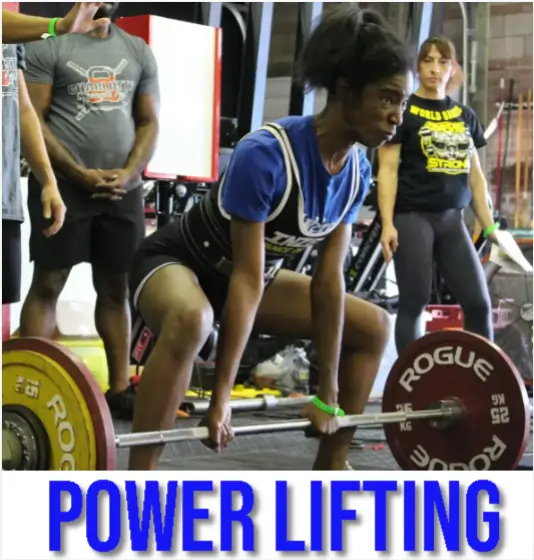
The Ultimate Powerlifting Guide for Better Performance
-ADVERTISEMENT-

Introduction
Powerlifting is a transformative discipline that tests both physical and mental limits. It revolves around mastering three core lifts: the squat, bench press, and deadlift.
Achieving peak performance in powerlifting necessitates a blend of precise technique, advanced training methods, proper nutrition, effective recovery strategies, and psychological resilience.
This comprehensive guide delves into each aspect, providing actionable insights and expert advice to help you elevate your powerlifting game.
Powerlifting Fundamentals and Technique Optimization
Core Lifts Overview
| Lift | Description | Key Muscles Engaged |
|---|---|---|
| Squat | A lower body exercise focusing on bending the knees and hips to lower and raise the body. | Quadriceps, hamstrings, glutes, lower back |
| Bench Press | An upper body exercise where you press a barbell away from your chest while lying on a bench. | Chest, triceps, shoulders |
| Deadlift | A full-body lift where you lift a barbell from the ground to hip level using a combination of strength and technique. | Hamstrings, glutes, lower back, forearms |
Technique Optimization
- Squat: Ensure proper foot placement shoulder-width apart, maintain a neutral spine, and engage your core throughout the movement.
- Bench Press: Focus on grip width, elbow positioning, and shoulder stability to maximize power and minimize strain.
- Deadlift: Start with a strong hip engagement, maintain a neutral spine, and use a controlled motion to lift and lower the barbell.
Advanced Training Techniques
To push your powerlifting limits, incorporate advanced techniques into your routine:
- Paused Reps: Introduce pauses at the most challenging points of each lift to build strength and power.
- Accommodating Resistance: Use bands and chains to dynamically adjust resistance throughout the lift, enhancing muscular strength.
- Eccentric Training: Focus on the lowering phase of the lift to increase muscle strength and resilience.
Nutritional Strategies for Optimal Performance
Essential Nutrients for Powerlifters
| Nutrient | Role in Performance | Food Sources |
|---|---|---|
| Protein | Supports muscle repair and growth | Chicken, fish, eggs, legumes |
| Carbohydrates | Fuels intense workouts | Whole grains, fruits, vegetables |
| Healthy Fats | Maintains hormonal balance | Avocados, nuts, olive oil |
| Hydration | Affects performance and recovery | Water, electrolyte-rich beverages |
Maintain a balanced diet rich in protein, carbohydrates, and healthy fats to support recovery and muscle growth. Hydration is equally critical, affecting overall performance and recovery.
ADVERTISEMENT-

Recovery and Injury Prevention
- Structured Recovery: Incorporate rest days, active recovery, foam rolling, and stretching into your routine.
- Sleep: Prioritize 7-9 hours of sleep per night for muscle repair and overall recovery.
- Injury Prevention: Focus on proper warm-up routines, adherence to technique, and listening to your body’s signals.
Psychological Strategies for Success
Develop mental fortitude by setting clear, achievable goals and maintaining a positive mindset. Visualization techniques can enhance focus and performance. Embrace challenges and setbacks as opportunities for growth, building resilience to overcome obstacles.
Disclaimer
This guide provides general information on powerlifting techniques, training methods, nutrition, recovery, and psychological strategies. Always consult with a fitness professional or healthcare provider before starting any new exercise or nutrition program, especially if you have underlying health conditions or concerns.
User Reviews
John M.: “This guide has been a game-changer for my powerlifting routine. The detailed technique tips and advanced training methods have significantly improved my performance.”
Emily R.: “I found the nutritional and recovery strategies incredibly helpful. They’ve made a big difference in my overall strength and recovery time.”
-ADVERTISEMENT-

Conclusion
Achieving peak performance in powerlifting requires a multifaceted approach that encompasses technique optimization, advanced training methods, proper nutrition, diligent recovery, and psychological resilience.
By incorporating these strategies, you can push your limits and enhance your lifting capabilities, leading to remarkable progress in your powerlifting journey.
Frequently Asked Questions (FAQs)
What are the basic lifts in powerlifting?
The three basic lifts in powerlifting are the squat, bench press, and deadlift. Each focuses on different muscle groups and requires specific techniques for optimal performance.
How often should I train for powerlifting?
A typical powerlifting training program involves 3-4 sessions per week, focusing on each of the three main lifts. The frequency can vary based on individual goals and recovery capacity.
What should I eat before a powerlifting workout?
Consume a balanced meal with protein and carbohydrates about 1-2 hours before your workout. Options include chicken and rice, or a smoothie with protein powder and fruit.
How can I prevent injuries in powerlifting?
Prevent injuries by adhering to proper technique, incorporating warm-ups, and listening to your body’s signals. Regular recovery practices such as stretching and foam rolling also contribute to injury prevention.
How important is mental resilience in powerlifting?
Mental resilience is crucial in powerlifting. Setting clear goals, using visualization techniques, and maintaining a positive mindset can enhance performance and help overcome challenges.
Related Topics

Rihanna Cruz, is a wordsmith seasoned in three years of online gaming journalism, captivates readers with her passion-fueled articles. She translates complex mechanics into engaging narratives, offering insightful perspectives on mobile RPGs, esports psychology, and more.








